3. What types of funding are available for sustainable, cultural, or social projects in Europe?
- october 2025 -
The European Union offers numerous funding opportunities for initiatives that promote sustainability, culture, social innovation, and civic participation.
Each programme addresses specific objectives, with different eligibility rules, participation methods, and selection criteria.
Key EU programmes:
- Erasmus+ – education, youth, mobility
- Creative Europe – cultural cooperation
- Horizon Europe – research and innovation
- LIFE – climate and environment
- Interreg – regional cooperation
- Citizens, Equality, Rights and Values (CERV)
Choosing the right programme depends on three key factors:
- The nature of the project – educational, cultural, environmental, social, or research-based.
- The type of organisation – local authority, university, NGO, cultural enterprise, or mixed partnership.
- The scale and expected impact – local, national, or transnational.
Let’s take a closer look at each programme.
Erasmus+
Main objectives:
Education, youth, mobility, and sport; enhancing skills, inclusion, and active citizenship.
Who can participate:
Schools, universities, training centres, NGOs, youth associations, local authorities.
Types of eligible activities:
International mobility (students, staff), partnerships between organisations, policy cooperation, non-formal education and training.
Cross-cutting priorities: inclusion; digital transformation; green and sustainability goals.
Example:
A “Capacity Building Youth” project that uses art, culture, and music as tools for intercultural dialogue among young people with fewer opportunities.
Key challenges:
Strict timelines, complex application procedures, co-financing required, and detailed monitoring and reporting.
🔗 Official website: https://erasmus-plus.ec.europa.eu
💡 Managed by the European Commission (DG EAC) and National Agencies in each country.
📘 Includes calls, programme guides, application forms, and annual priorities.

Creative Europe
Main objectives:
To support Europe’s cultural and creative sectors by promoting cultural diversity, competitiveness, artistic mobility, and the sector’s sustainability.
Who can participate:
Cultural and creative organisations, enterprises, public and private institutions working transnationally.
Types of eligible activities:
European cooperation projects, professional exchanges and mobility, cultural networks, co-productions, heritage promotion, literary translation, and audiovisual production.
Cross-cutting priorities:
Digital transition, environmental sustainability, social inclusion, gender equality.
Example:
The “European Cooperation Projects” call funds partnerships between cultural organisations from at least three countries, with three funding scales (small, medium, large).
Key challenges:
High competition level, mandatory international partnerships, co-financing requirements, and strong impact and sustainability criteria.
🔗 Official website: https://culture.ec.europa.eu/creative-europe
💡 Includes the sub-programmes Culture, Media, and Cross-sectoral.
📘 The EU portal lists open calls, project results, and detailed guidelines.
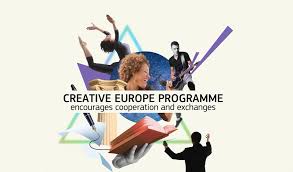
Horizon Europe (Cluster 2: Culture, Creativity & Inclusive Society)
Main objectives:
To support research and innovation on social transformations, cultural heritage, democratic participation, equity, and inclusion.
Who can participate:
Universities, research centres, public and private entities, NGOs, and cultural and creative industries in international partnerships.
Types of eligible activities:
Applied research, social innovation, digital tools and methodologies for cultural heritage, studies on democracy and social change.
Cross-cutting priorities:
Technological innovation, inclusion, social resilience, and culture as a driver for sustainable development.
Example:
Projects such as “Preserving and enhancing cultural heritage with digital technologies” that apply innovative solutions for safeguarding and enhancing heritage.
Key challenges:
High scientific and managerial skills required, long timelines, competitive selection, and rigorous financial and technical reporting.
🔗 Official website: Horizon Europe – Research and Innovation
💡 Main EU programme for research, innovation, and the green transition.
📘 All calls are published on the Funding & Tenders Portal.
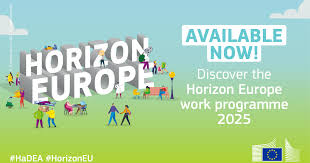
LIFE Programme
Main objectives:
To promote environmental protection, climate action, and the transition towards a sustainable, circular economy.
Who can participate:
Public authorities, NGOs, research institutions, enterprises, universities, and third-sector organisations.
Types of eligible activities:
Pilot or demonstrative projects on biodiversity, climate change mitigation/adaptation, circular economy, environmental governance, and energy efficiency.
Cross-cutting priorities:
Environmental sustainability, ecological innovation, replicability, and territorial impact.
Example:
Projects focusing on biodiversity conservation and emission reduction, such as restoring natural habitats or improving air and water quality.
Key challenges:
Mandatory co-financing, technically complex projects, need to demonstrate concrete and replicable results.
🔗 Official website: https://cinea.ec.europa.eu/life_en
💡 Supports projects on the environment, nature, clean energy, and climate adaptation.
📘 Managed by the CINEA Agency, focusing on pilot, demonstrative, and best-practice actions.

Interreg (European Territorial Cooperation)
Main objectives:
To strengthen cross-border, transnational, and interregional cooperation, and to promote sustainable local development, resilience, and territorial innovation.
Who can participate:
Local and regional authorities, universities, NGOs, chambers of commerce, and public or private enterprises in partnerships between European regions.
Types of eligible activities:
Territorial development projects, sustainable tourism, culture, soft infrastructure, environment, social innovation, and governance.
Cross-cutting priorities:
Territorial cohesion, sustainability, resilience, partnership, and exchange of good practices.
Example:
The project “CCSI4CCSI” (Cultural and Creative Sectors and Industries for Collaboration, Competitiveness, Sustainability and Innovation) supports innovation in the cultural and creative sectors.
Key challenges:
Complex regional decision-making, territorial constraints, need for strong institutional collaboration, and co-financing obligations.
🔗 Official website: https://interreg.eu
💡 Promotes cooperation between European regions through cross-border, transnational, and interregional projects.
📘 Each Interreg programme (e.g., Interreg Europe, MED, Alpine Space) has its own dedicated website, which includes calls and priorities.
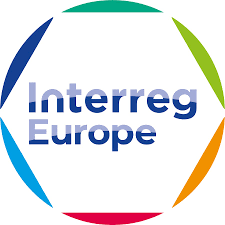
CERV – Citizens, Equality, Rights and Values
Main objectives:
To promote human rights, equality, civic and democratic participation, fight discrimination and violence, and strengthen European values.
Who can participate:
NGOs, local authorities, schools, universities, civic and cultural associations, and European civil society networks.
Types of eligible activities:
Workshops, exchanges of best practices, conferences, awareness campaigns, town-twinning, projects on historical memory and active citizenship.
Cross-cutting priorities:
Inclusion, diversity, democratic participation, and fundamental rights.
Example:
A community-led project in Portugal received CERV funding to promote inclusion through intergenerational cultural events.
Key challenges:
Modest budgets, high competition, co-financing required, and the need to demonstrate tangible impact and European added value.
🔗 Official website: https://social-economy-gateway.ec.europa.eu/eu-funding-programmes/citizens-equality-rights-values-cerv_en
💡 Promotes fundamental rights, inclusion, gender equality, and civic participation.
📘 Managed by EACEA (European Education and Culture Executive Agency).
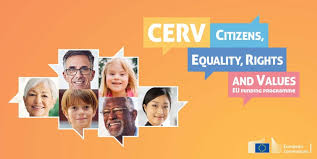
Selecting the right EU programme is crucial for developing a strong, coherent, and competitive proposal.
Here are some practical orientation criteria:
| Obiettivo principale del progetto | Programma più adatto | Motivazione |
| Formazione, scambi, sviluppo di competenze, inclusione giovanile | Erasmus+ | Supporta mobilità e cooperazione per istruzione, gioventù e sport. |
| Promozione culturale, creatività, arti visive o performative, audiovisivo | Creative Europe | È il programma specifico per i settori culturali e creativi. |
| Ricerca, innovazione sociale o tecnologica, sviluppo di nuovi metodi | Horizon Europe | Finanziamento dedicato alla ricerca e sviluppo con impatto sociale. |
| Tutela dell’ambiente, clima, biodiversità, economia circolare | LIFE Programme | Supporta progetti ambientali concreti e replicabili. |
| Sviluppo territoriale o cooperazione tra regioni europee | Interreg | Promuove partenariati e strategie comuni tra territori diversi. |
| Promozione dei diritti, partecipazione civica, uguaglianza, memoria europea | CERV | Incentiva iniziative legate ai valori e alla cittadinanza europea. |
Suggerimenti operativi per la progettazione
- Definisci obiettivi chiari e misurabili: ogni programma valuta la coerenza tra obiettivi, attività e risultati attesi.
- Cerca partner complementari: molti bandi europei richiedono un partenariato internazionale (minimo 3 Paesi per Creative Europe, Interreg, Horizon, ecc.).
- Considera il cofinanziamento: quasi tutti i programmi richiedono una quota di fondi propri o di altri enti.
- Valorizza l’impatto europeo: dimostra che il tuo progetto crea un valore condiviso oltre i confini nazionali.
- Pianifica la sostenibilità nel tempo: l’UE privilegia progetti che continuano a generare benefici anche dopo la fine del finanziamento.
- Cura la comunicazione e la disseminazione: risultati visibili e replicabili aumentano la credibilità e le possibilità di ulteriori fondi.
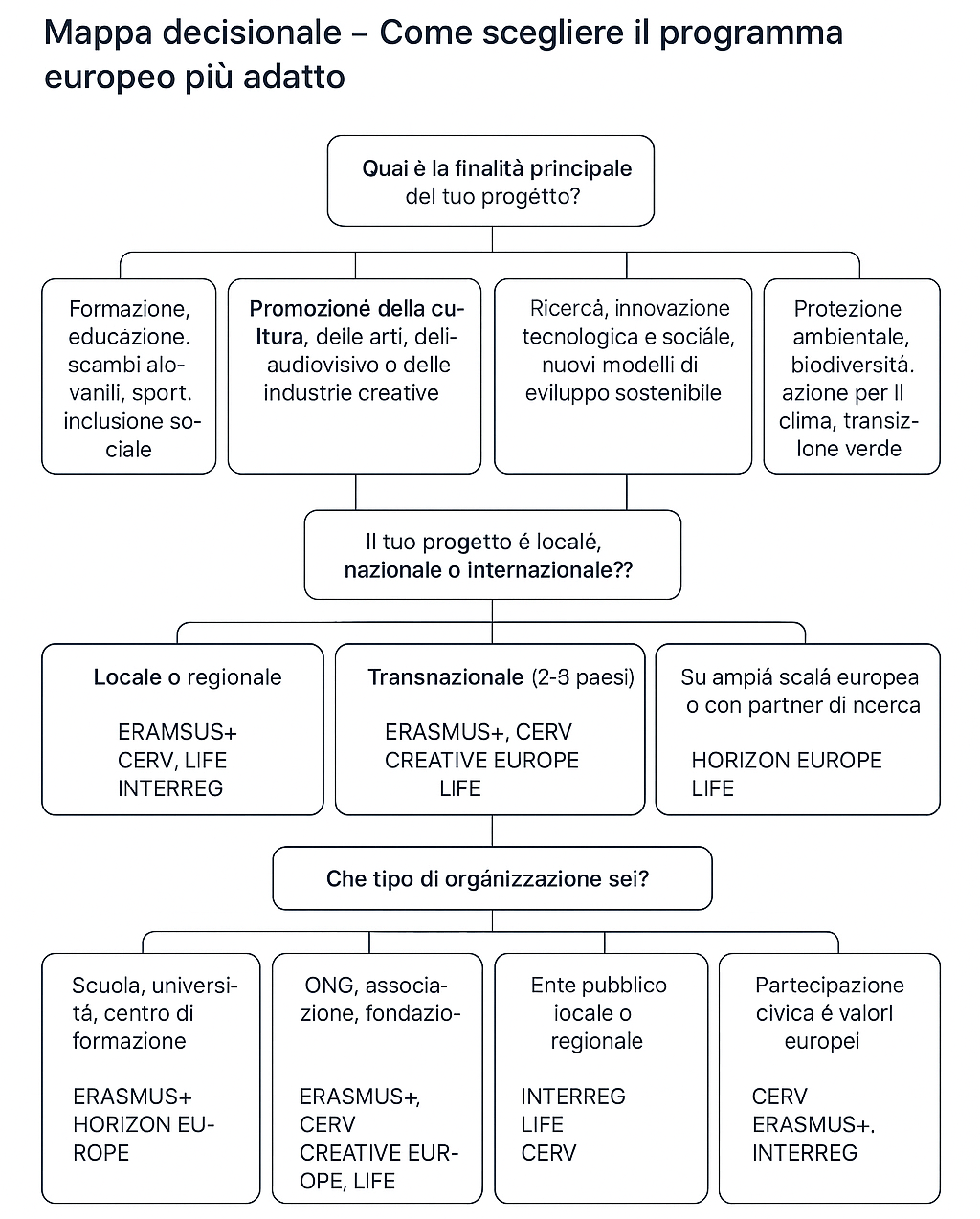
How to Formulate SMART Objectives for Your Project
- august 2025 -
If you’ve ever tried to write a project proposal — whether for sustainable tourism, cultural heritage, or social innovation — you know that the objectives section can make or break your application. Funders, stakeholders, and partners all want to see that you’re not just dreaming big, but planning smart.
This is where the SMART objectives framework becomes your best friend.
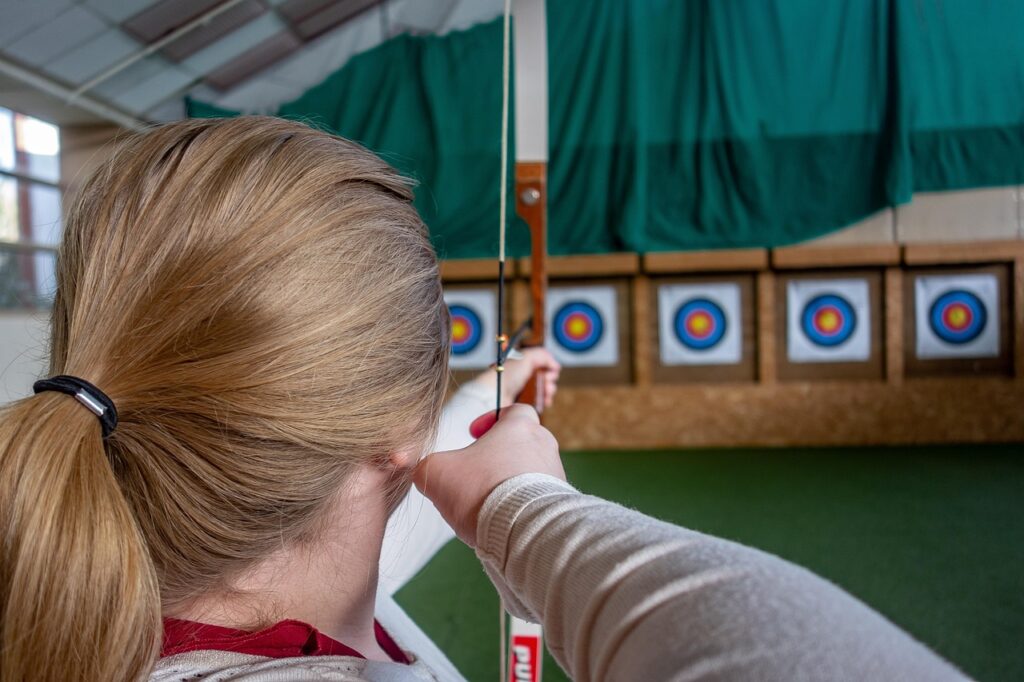
What Are SMART Objectives?
SMART stands for:
- Specific – clear, precise, and focused.
- Measurable – results that can be tracked with data.
- Achievable – realistic with the resources you have.
- Relevant – aligned with your project’s mission and funding priorities.
- Time-bound – with a clear deadline.
Using this method helps you communicate your vision clearly and convince funders that your project is realistic and impactful. The SMART objectives guide your team, keep your activities focused, and make it easier for funders to see the potential impact. Without SMART objectives, proposals can feel vague, and progress can be difficult to evaluate.
Why SMART Objectives Matter for Project Funding?
Funding bodies in the EU and worldwide prefer applications that are clear, evidence-based, and results-oriented.
With SMART objectives, you:
- Show you have a plan — not just an idea.
- Demonstrate accountability through measurable results.
Make reporting easier, as indicators are built in from the start.
How to Apply the SMART Framework
- Specific
Instead of: “We want to improve tourism in the area.”
Say: “We will develop a guided eco-tourism trail featuring 15 local heritage sites in the X Valley.”
Clear wording avoids ambiguity and tells everyone exactly what you’re aiming for.
💡 Related resource: Eco-tourism examples and best practices
- Measurable
Numbers make your objective concrete:
“Train 60 rural youth in sustainable tourism business models.”
Numbers make results tangible and help during reporting.
- Achievable
Check your resources before setting the goal. If your past record shows training 20 people/year, reaching 60 will require partnerships and additional trainers — but it’s still realistic.
Ambition is great, but overpromising can harm your credibility.
- Relevant
Your objectives must connect directly to your overall goals and to the priorities of the funding program.
If the call is about rural economic growth, show how your project creates local jobs.
- Time-bound
Deadlines keep you accountable:
“Within 12 months, train 60 rural youth…”
Practical Example
SMART Objective:
“Train 60 rural youth in sustainable tourism business models within 12 months, improving employability in three EU regions.”
This works because it’s:
- Specific: Who and what you’re targeting.
- Measurable: 60 participants, three regions.
- Achievable: Resources identified.
- Relevant: Matches EU funding priorities.
- Time-bound: 12-month deadline.
Tips for Writing Strong SMART Objectives
- Start with the desired impact, then work backwards.
- Keep language active and precise.
- Use verbs that imply action (train, develop, reduce, increase).
- Always check the funder’s exact wording in their guidelines.
- Test your objective: can someone unfamiliar with your work understand it instantly?
Sector Examples of SMART Objectives
- Sustainable Tourism
“Install and promote five eco-certified accommodations in the Green Hills region within 18 months, reducing plastic waste by 30% in partner businesses.” - Cultural Heritage
“Digitise and publish online 500 historical documents from the municipal archive within 10 months.”
Social Innovation
“Provide 200 hours of free legal counselling to 80 migrant women within one year, improving access to essential services.”
Avoid These Common Mistakes
- Writing vague goals without measurable outcomes.
- Setting unrealistic targets without matching resources.
- Forgetting to connect objectives to funder priorities.
- Missing deadlines in your proposal.
Your Next Steps
If you’re preparing a project proposal, take the time to write SMART objectives that are both ambitious and realistic.
They will make your proposal stand out and increase your chances of securing funding.
💡 Need help designing strong objectives for your next project?
I offer guidance and templates for sustainable tourism, culture, and social innovation proposals.
📩 Contact me here to start building your SMART project plan.
How do you write an effective project proposal to participate in a funding call?
- June 2025 -
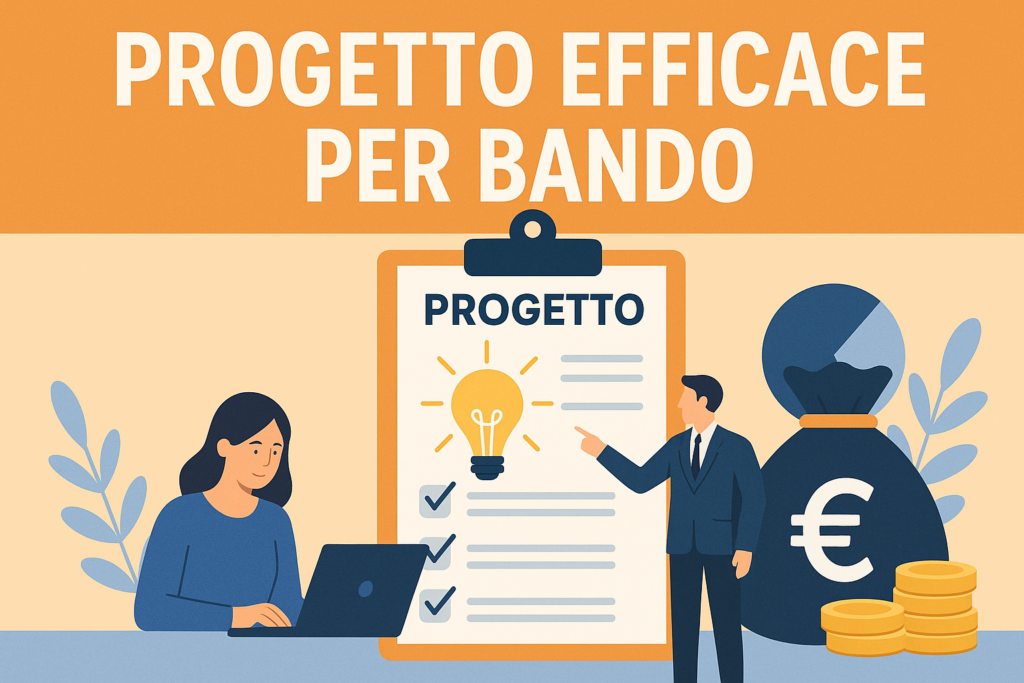
An effective project responds directly to the objectives of the call and follows a clear and coherent logical structure. It must:
- Precisely analyse the problem or need to be solved. (e.g. reduction of environmental impact, involvement of local communities, digitalisation).
- Define SMART objectives (Specific, Measurable, Achievable, Realistic, Time-bound). Example: “Increase slow tourism in Park X by 20% within 12 months”.
- Describe detailed activities, with times, resources, and responsibilities.
For each activity:
- What will be done?
- How (methodology),
- Who (partners/human resources involved),
- When (timetable).
- Involve partners and beneficiaries (stakeholders) credibly and concretely.
- Present a realistic budget consistent with the call’s activities and rules.
- Provide impact indicators for the expected results and communication strategies.
- Create a monitoring plan.
- Indicate the duration independently over time.
We talk about the sustainability of a project when
- At an economic level, it indicates how it will continue after the financing.
- The environmental impact is considered from an ecological point of view, and concrete actions are indicated to reduce the effects.
- In the social sphere, inclusion, participation, and benefits for the local community are not just words but measurable actions.
In sustainable tourism, a project can include creating ecotourism routes, a pre- and post-impact monitoring plan to reduce the environmental impact, and training local guides to create or increase employment in the area.
Ready to Design Your Own Sustainable Tourism Project? Start by defining your goals, community needs, and environmental priorities. Need support? Reach out for guidance on project planning and sustainable design strategies.
👉 Contact me to schedule a free consultation or brainstorm session.

Sustainable Tourism Projects example
Chalalán Ecolodge – Bolivia (Latin America)
Located within Bolivia’s Madidi National Park, Chalalán Ecolodge is a community-based ecotourism initiative managed by the Indigenous community of San José de Uchupiamonas. Established in collaboration with Conservation International, the lodge aims to promote conservation and cultural preservation while providing economic benefits to the local community.
Key Features:
- Eco-Friendly Accommodations: The lodge comprises traditional Tacana-style cabins constructed using local materials, powered by solar energy, and equipped with sustainable waste management systems.Wikipedia
- Environmental Education: Guests can participate in guided tours led by community members, offering insights into the region’s rich biodiversity and Indigenous culture.
- Conservation Efforts: Chalalán plays a vital role in preserving the Madidi National Park’s diverse ecosystems, which are home to numerous endemic species.
Learn More: chalalan.com
Nyandungu Eco-Tourism Park – Rwanda (Africa)
Nyandungu Eco-Park is Kigali’s first restored urban wetland, transformed into a 121-hectare eco-park that promotes biodiversity and environmental education. The park serves as a green oasis in the city, offering recreational and educational opportunities for residents and visitors.
Key Features:
- Wetland Restoration: The project involved planting over 17,000 trees of 55 indigenous species, revitalizing the area’s natural habitat.rdb.rw
- Educational Facilities: The park includes botanical gardens, medicinal plant gardens, and information centers to educate the public about environmental conservation.
- Community Engagement: Nyandungu has created over 150 green jobs and offers free entry to school groups, fostering community involvement and environmental stewardship.infrahub.africa.
Learn More: nyandunguecopark.rw
Gili Eco Trust – Indonesia (Asia)
Gili Eco Trust is a non-profit organization based in the Gili Islands, Indonesia, focusing on coral reef restoration, waste management, and environmental education. Established in 2000, the organization works to protect the marine ecosystem and promote sustainable tourism practices.
Key Features:
- Coral Reef Restoration: Utilizing Biorock technology, Gili Eco Trust restores damaged coral reefs, enhancing marine biodiversity and resilience.Trawangan Dive+ Volunteer World+zublu
- Waste Management: The organization implements waste reduction programs, organizes beach cleanups, and promotes recycling initiatives.
- Community Education: Gili Eco Trust conducts workshops and educational programs to raise awareness about environmental conservation among locals and tourists.
Learn More: giliecotrust.com

Sustainable Tourism Projects in Italy
Oltrepò Pavese – Lombardia
Oltrepò Pavese is renowned for its rolling hills, vineyards, and commitment to sustainable tourism.
Highlights:
- Organic Farming: The region boasts numerous organic farms and agritourism establishments that emphasize eco-friendly practices .ecobnb.com
- Eco-Accommodations: Valtidone Verde, an award-winning bio-farm, offers holistic experiences combining sustainability with wellness ecobnb.com.
- Green Mobility: Initiatives like the Greenway Voghera-Varzi promote cycling and walking, reducing carbon footprints .castellotorrazzetta.it + Greenway Voghera- Varzi
Learn More: ecobnb.com
Alta Badia – Trentino – Alto Adige
Nestled in the Dolomites, Alta Badia is recognized for its sustainable tourism practices, particularly through the ATIRA project.
Initiatives:
- ATIRA Project: Focuses on ecological restoration, environmental education, and promoting sustainable tourism activities.
Amur, Teritore, Insegnamënt, Respet, Ambiënt: ATIRA – a series of meetings and excursions aimed at raising residents‘ and visitors’ awareness on issues of crucial importance for a sustainable development of the territory. Alta Badia
- Green Mobility: Encourages the use of e-bikes and public transport to reduce carbon emissions.
Learn More: altabadia.org
These projects exemplify how sustainable tourism can lead to positive environmental and social outcomes. By integrating conservation efforts with community involvement, they offer valuable models for responsible travel worldwide.

Indirect and consolidated sources (not specific to a single call)
Data was provided by ChatGPT and analysed, compared, and evaluated by me.
Manuals and guidelines on European project planning, including:
-
-
-
-
- Guides from the European Commission on how to write projects for Erasmus+, LIFE, and Horizon Europe.
- Guidance documents on structural funds (ERDF, ESF) and rural development funds (PSR).
- CANDIDATE (Project Capacity) manuals developed by various Italian regions (e.g. Emilia-Romagna, Piedmont).
- ISFOL, CSVnet, CEV, training bodies, foundations (e.g. Cariplo, San Paolo.
-
-
-
Experience on Italian national/regional calls, such as:
-
-
-
-
- Calls from the Ministry of Tourism and the Ministry of the Environment.
- Notices from GAL (Local Action Groups) for sustainable rural and tourism development.
- Regional funding (e.g. PNRR Tourism, POR FESR, Invitalia Calls).
-
-
-
Models and practices promoted by institutions and foundations:
-
-
-
-
- Symbola Foundation, Legambiente Tourism, Slow Food.
- Professional associations in the sector (e.g. AITR – Italian Association of Responsible Tourism).
-
-
-
Project management methodologies:
-
- Logical-instrumental approaches such as the Logical Framework Approach (LFA).
- PMI (Project Management Institute) principles.
Sara
Would you like to subscribe to my newsletter? In English, I am using the LinkedIn newsletter. I want to use it because I understand more about who has subscribed via the LinkedIn profile. Here is the link: https://www.linkedin.com/newsletters/7107445901593313280/